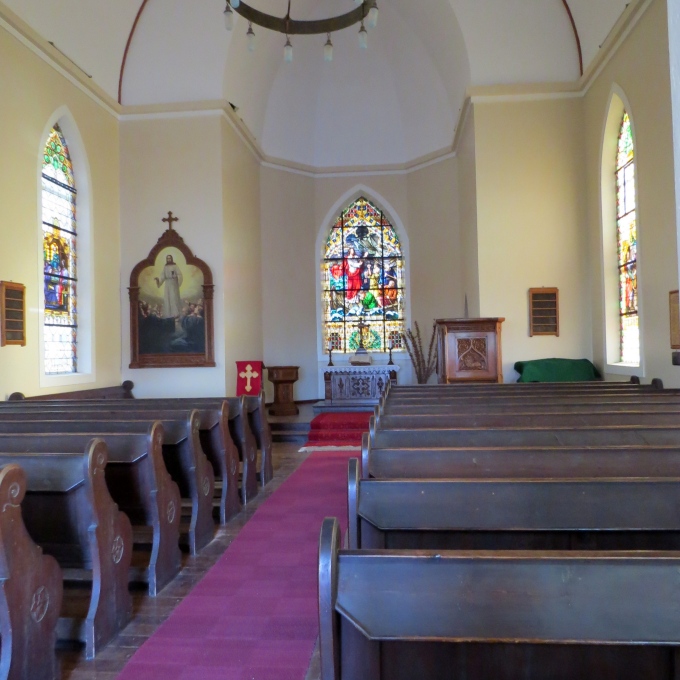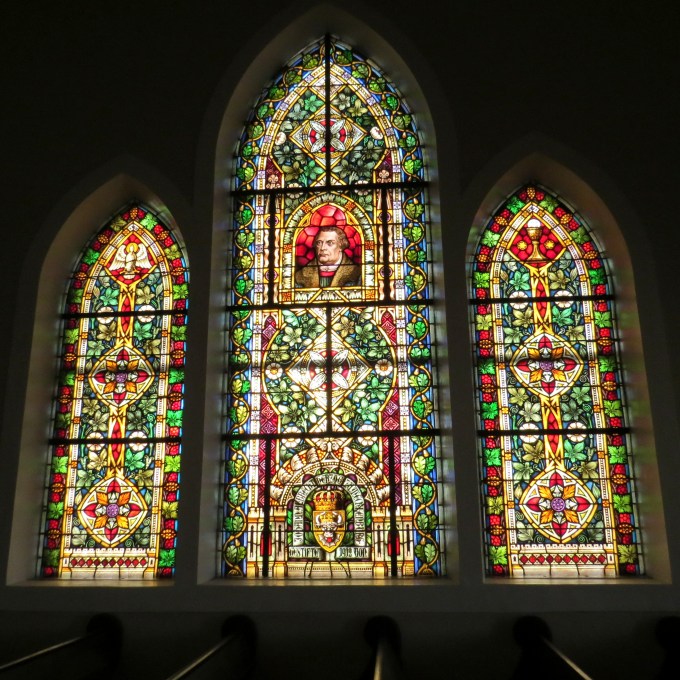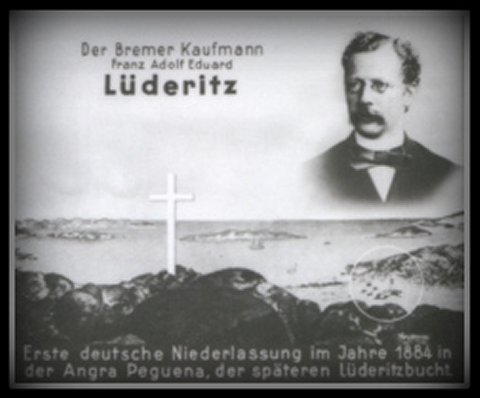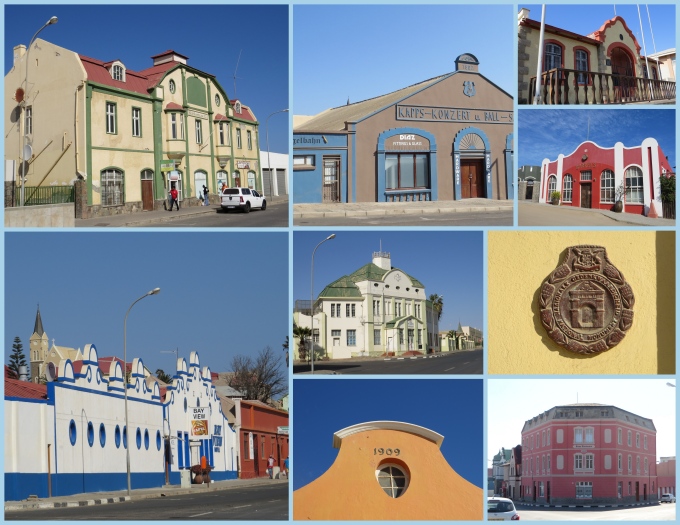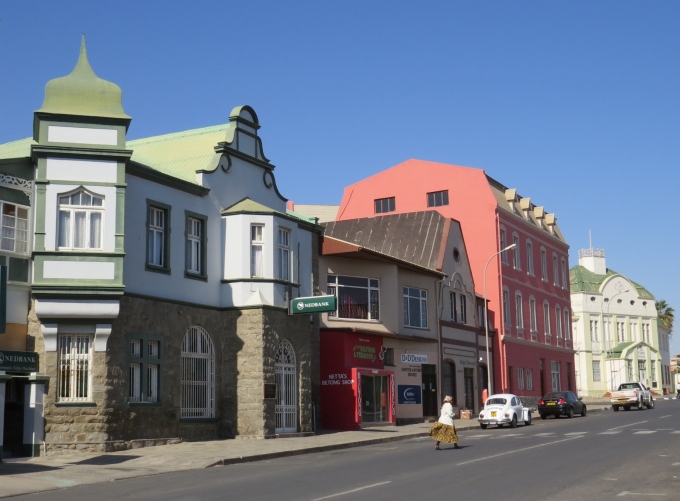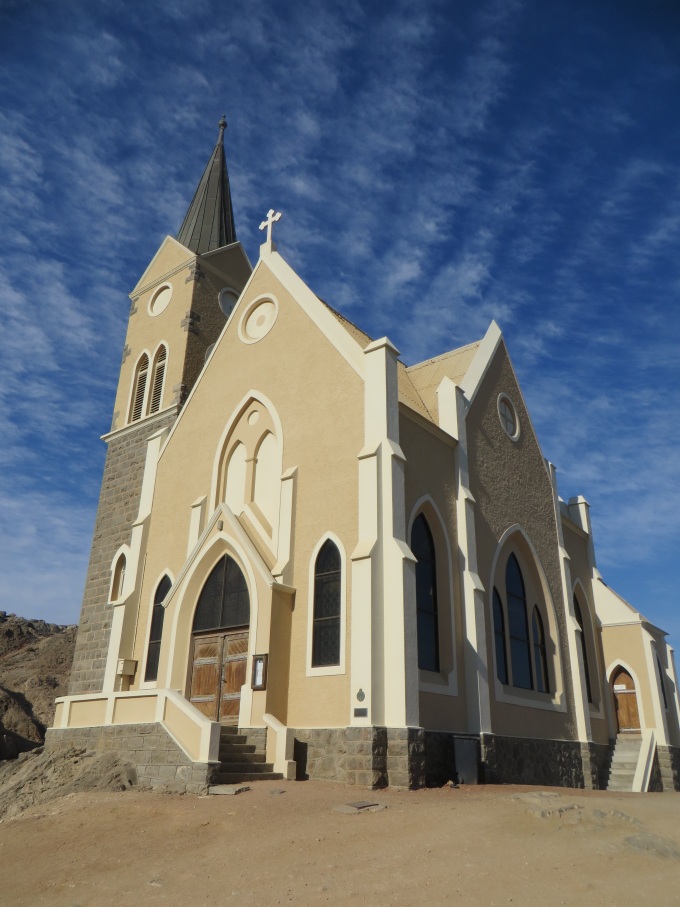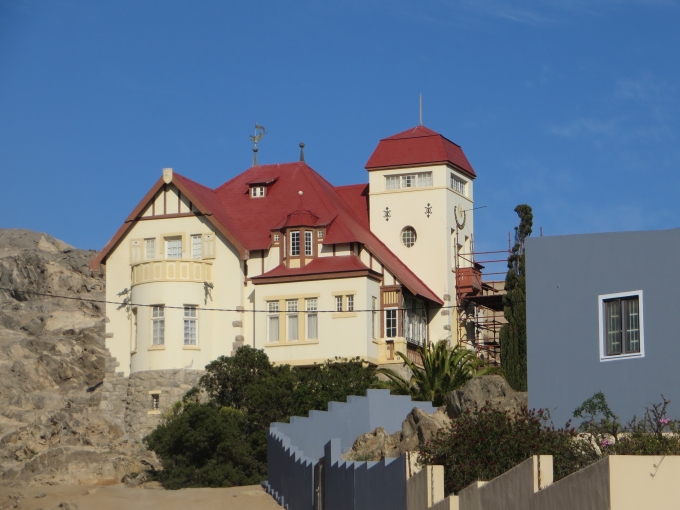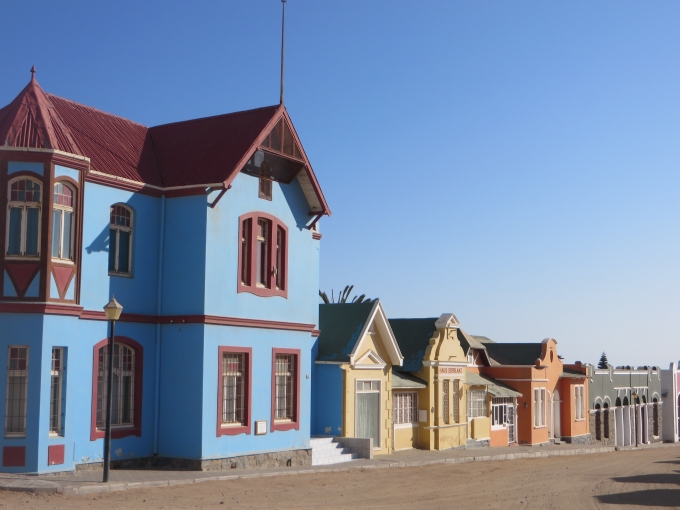Felsenkirche - Lüderitz's Iconic Church
/Though when we first arrived we'd strolled past Lüderitz's iconic Felsenkirche aka Church on the Rock, we'd never been around for the one hour a day – 4pm-5pm - when the church was actually open for visitors to wander through. This church, high on a natural granite pedestal known as Diamond Hill, is the highest building in town and can be seen from pretty much everywhere. We happened to be in the neighborhood late one afternoon and wanted to take a look inside.

Felsenkirche is an Evangelical Lutheran church in keeping with Luderitz's strong German colonial heritage. Designed and built by German architect, Albert Bause, in a “neo-Gothic style with Victorian elements”, construction of the church began in 1911 and was completed in 1912. For such a small town, it's a pretty impressive piece of architecture, especially considering where and when it was built.
The inside of the church is quite simple with little adornment other than the stained-glass windows, which are magnificent.
As the sun streams through the windows in the late afternoon, it makes the whole visit, including climbing the steep hill to get there, all worthwhile. Over the altar is a window that portrays “Jesus calming the storm” … most appropriate for a harbor town. The window was donated by Kaiser Wilhelm II.
A triptych (3-paneled-window) portraying Martin Luther, founder of the Lutheran church, was donated by Duke Johann Abrecht of Mecklenberg, Germany. Albrecht's German Colonial Society had also donated the property upon which the church was built.
I noticed that the Duke couldn't resist having his name and coat of arms included in the window's fine art.
At the height of the diamond rush in Luderitz, the congregation grew to 800 members. Following WWI and the ceding of the territory to South Africa, the German population diminished significantly. The church was ransacked at one point, but today has been restored to pristine condition. It was declared a Namibian National Monument in 1978. Nowadays, the congregation is just 50 members and church services are only held once a month.
As we were leaving the church, I glanced up at the bell tower where two pigeons were perched. I recognized one pigeon as a common feral rock pigeon, but his neighbor, a beefy, all-black fellow with a white cere, was a bit unusual. I later identified it as a carneau pigeon, originally bred in northern France and used for food ... “squab”. I think this guy hangs around the church to thank God that he wasn't anyone's dinner.



